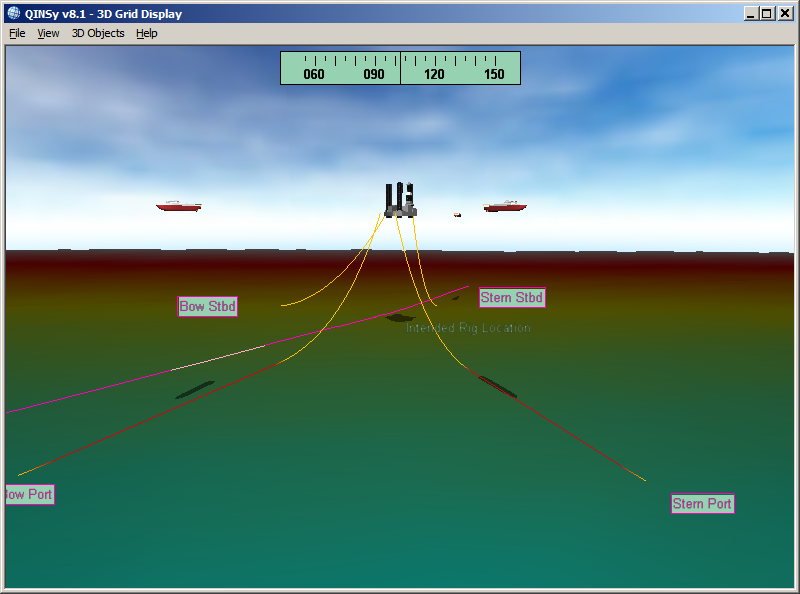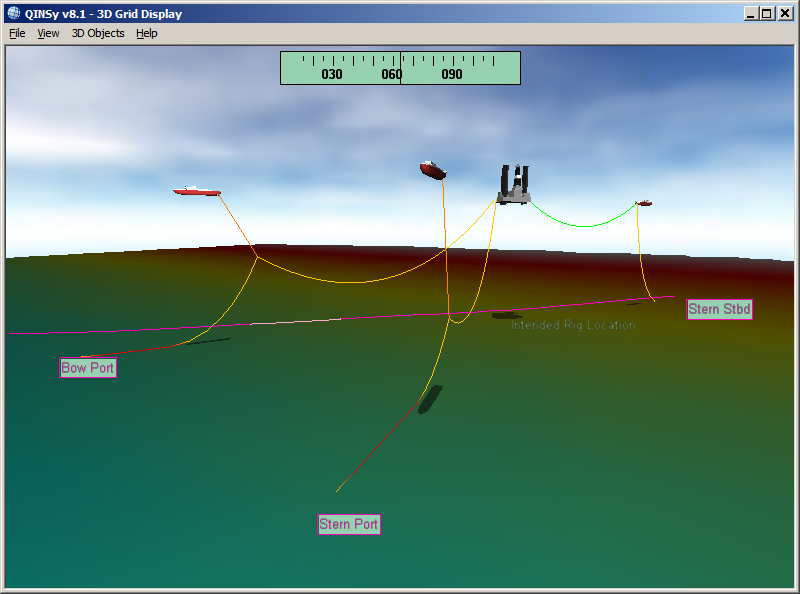How-to Anchor Handling Hookup Operation
Introduction
With anchor handling operations the idea is that in the end a rig (or barge) is connected to one or more anchors which are dropped on the seafloor. Each of these dropped anchors are connected with a long wire to a fairlead winch on the rig. Once all is in place the rig will stay put.

Since June 2015 QINSy supports a new type of anchor handling operation: Hookup
With normal anchor handling the idea is that a rig or barge has several anchors racked on board and these anchors are transferred to one or more tug boats. While the anchor wire is still connected to the fairlead winch of the rig, the tugboat moves to the anchor drop location where it will be dropped upon arrival.
A Hookup anchor handling operation is some sort of 'reversed' anchor handling:
In this case the anchors are already dropped on the seafloor, but not yet connected to rig nor tug boat. The anchor has a wire with a (sub) surface buoy at the end.
A tug boat will pick up this buoy and connects its own working wire to the anchor wire. After that it will sail back to the rig where the anchor wire will be connected with the rig chain wire coming from the fairlead winch.
So after completion of such an operation the result will be the same as with normal anchor handling: A rig is connected to several dropped anchors in order to stay in place.

The Hookup operation functionality in QINSy will help you follow the necessary stages in order to complete the operation.
Always refer to the current project procedures as required and distributed by your contractor and / or client.
This document is just a guideline to clarify the steps involved with QINSy.
Connected pages:
